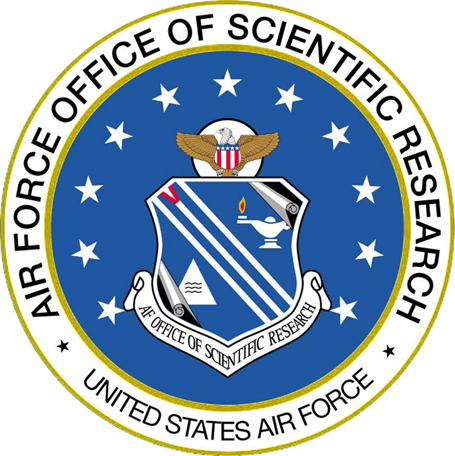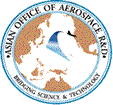Apologies for cross posting
Solomonoff 85th Memorial Conference
http://www.Solomonoff85thMemorial.monash.edu.au/
Proceedings of this multi-disciplinary conference will be published by Springer in the prestigious LNAI (LNCS) series. Selected papers on suitable topics might be chosen to be expanded upon for journal special issues.
********************************************************************************************
Dear Colleague
You are cordially invited to submit a paper and participate at Solomonoff 85th Memorial Conference which, will be held in Melbourne, Australia, between 30 November - 2 December 2011 with the possibility of a tutorial/workshop being organised on the 29th November 2011. This multi-disciplinary Conference will be run back to back with the AI 2011 Conference in Perth, Australia.
This is a multi-disciplinary conference based on the wide range of applications of work related to or inspired by that of Ray Solomonoff.
As well as ``artificial intelligence'', ``machine learning'', ``statistics'' and ``philosophy'', it is clear that the categories as keywords for this conference should also include (e.g.) ``mathematics'', ``linguistics'', ``AI'', ``computer science'', ``data mining'', ``bioinformatics'', ``computational intelligence'', ``computational science'', ``life sciences'', ``physics'', ``knowledge discovery'', ``ethics'', ``computational biology'', ``computational linguistics'', ``collective intelligence'', etc.
Ray Solomonoff (1926-2009) was the originator (in 1964) of algorithmic information theory. Solomonoff's (1964) work preceded the slightly later independent work of Kolmogorov (1965) [from whom we have the term Kolmogorov complexity], shortly before the not unrelated work of the then teenage G. J. Chaitin (1966). But, unlike the slightly later Kolmogorov and Chaitin, Solomonoff (1964) also saw the relevance of this new area to statistics, machine learning, artificial intelligence and prediction - and coined the term algorithmic probability (ALP). Given a body of data, the algorithmic probability distribution behind Solomonoff prediction is obtained by doing a posterior-weighted averaging
of the outputs of all available computable theories - with the prior probabilities of theories depending (monotonically decreasingly) upon the lengths of their encodings on the chosen Universal Turing Machine (UTM).
Independently of and shortly after the above was the Minimum Message Length (MML) work of Wallace and Boulton (1968), based on very similar Bayesian information-theoretic principles but instead focussing on the one single best model for statistical and inductive inference (and whose relationship with algorithmic information theory was formalised in the 1990s). The related Minimum Description Length (MDL) principle followed a decade later in Rissanen (1978), co-incidentally taking the same form as Schwarz's (1978) Bayesian Information Criterion (BIC) of the same year - and with some approaches [such as the still popular but largely unrelated Akaike's Information Criterion (AIC)] formed after MML but before MDL. The (algorithmic) information theory behind both Solomonoff prediction and (the two-part form of) MML inference (or model selection and point estimation) leads to a variety of statistical consistency (or convergence) results - apparently more general than for other approaches - and likewise makes the results of both approaches statistically invariant to re-parameterisation.
These approaches - both the MML inductive or inferential approach to choosing the single ``best'' model and the Solomonoff predictive approach of weighting over the posterior to form a predictive distribution - are two of at least as many approaches from (Kolmogorov complexity or) algorithmic information theory which have been applied to a range of areas. Such areas include (e.g.) statistical inference (and model selection and point estimation) and prediction, machine learning, econometrics (including time series and panel data), in principle proofs of financial market inefficiency, knowledge discovery and ``data mining'', theories of (quantifying) intelligence and new forms of (universal) intelligence test (for robotic, terrestrial and extra-terrestrial life), philosophy of science, the problem of induction, bioinformatics, linguistics, evolutionary (tree) models in biology and linguistics, geography, climate modelling and bush-fire detection, environmental science, image processing, spectral analysis, engineering, arguments that entropy is not the arrow of time, etc. Of course, this list will continue to grow and is not exhaustive.
Perhaps Solomonoff's next main contribution was the notion of ``infinity point'' (Solomonoff, 1985), later referred to as the ``singularity'', where machine intelligence catches up to and overtakes human intelligence - an increasingly discussed scenario which forms the basis of many science fiction films.
Solomonoff's obituary from the New York Times (January 2010) is at
www.nytimes.com/2010/01/10/science/10solomonoff.html,
duplicated at www.csse.monash.edu.au/~dld/MML.html#rjs.
In the year in which Ray Solomonoff would have had his 85th birthday and some weeks before the year in which Alan Turing (upon whose Universal Turing Machines much of Solomonoff's work is based) would have turned 100, this multi-disclipinary conference is timed for late 2011. It also follows on 15 years after the Information, Statistics and Induction in Science (ISIS) conference in 1996 and also held in Melbourne, Australia - whose invited speakers included Ray Solomonoff, (Turing Award winner and fellow artificial intelligence pioneer) Marvin Minsky, Jorma Rissanen (of Minimum Description Length [MDL]) and (prominent machine learning researcher) J. Ross Quinlan.
The contributions sought for this Solomonoff 85th memorial conference are the abovementioned themes and/or anything (else) directly or at least indirectly comparing with or building upon Solomonoff's work. The contributions sought for this conference include, but are not restricted to, both the abovementioned and the following:-
Statistical inference and prediction, Econometrics (including time series and panel data), in Principle proofs of financial market inefficiency, Theories of (quantifying) intelligence and new forms of (universal) intelligence test (for robotic, terrestrial and extra-terrestrial life), the Singularity (or infinity point, when machine intelligence surpasses that of humans), the future of science, Philosophy of science, the Problem of induction, Evolutionary (tree) models in biology and linguistics, Geography, Climate modelling and bush-fire detection, Environmental science, Image processing, Spectral analysis, Engineering, Artificial intelligence, Machine learning, Statistics and Philosophy, Mathematics, Linguistics, Computer science, Data mining, Bioinformatics, Computational intelligence, Computational science, Life sciences, Physics, Knowledge discovery, Ethics, Computational biology, Computational linguistics, Collective intelligence, structure and computing connectivity of random nets, effect of Heisenberg's principle on channel capacity, Arguments that entropy is not the arrow of time, and etc. See also Ray Solomonoff's Publications (and his obituary).
General and Program Chair
David Dowe, Monash University, Australia
Program Committee
Andrew Barron, Statistics, Yale University, USA
Greg Chaitin, IBM T.J. Watson Research Center, USA
Fouad Chedid, Notre Dame University, Lebanon
Bertrand Clarke, Medical Statistics, University of Miami, USA
A. Phil Dawid, Statistics, Cambridge University, UK
Peter Gacs, Boston University, USA
Alex Gammerman, Royal Holloway, University of London, UK
John Goldsmith, Linguistics, University of Chicago, USA
Marcus Hutter, Australian National University, Australia
Leonid Levin, Boston University, USA
Ming Li, Mathematics, University of Waterloo, Canada
John McCarthy, Stanford University, USA (Turing Award winner)
Marvin Minsky, MIT, USA (Turing Award winner)
Kee Siong Ng, ANU & EMC Corp, Australia
David Paganin, Physics, Monash University, Australia
Teemu Roos, University of Helsinki, Finland
Juergen Schmidhuber, IDSIA, Switzerland
William Uther, NICTA and University of New South Wales, Australia
Farshid Vahid, Econometrics, Monash University, Australia
Paul Vitanyi, CWI, The Netherlands
Vladimir Vovk, Royal Holloway, University of London, UK
Co-ordinator
Dianne Nguyen, Monash University, Australia
You will find more information about the Conference at the following Website:
http://www.Solomonoff85thMemorial.monash.edu.au/
For more details on how to submit a paper(s), please refer to the Submission Page at:
http://www.Solomonoff85thMemorial.infotech.monash.edu/submission.html
A list of accepted papers is available at:
http://www.solomonoff85thmemorial.monash.edu/accepted_papers.html
Important Dates
Extended Deadline of Paper Submission: 2 July 2011![]()
Notification of Acceptance of Paper: 15 August 2011
Receipt of Camera-Ready Copy: 5 September 2011
Conference Dates: 30 Nov. - 2 Dec. 2011
I look forward to receiving your valuable paper contribution and attendance at the Conference.
David Dowe
General Chairman
.
 |
|
 |
|
 |
24th Australasian Joint Conference on Artificial Intelligence (AI2011), 5-8 December, 2011
| Extended Deadline of Paper Submission: | 2 July 2011 |
| Notification of Acceptance of Paper: | 3 September 2011 |
| Receipt of Camera-Ready Copy: | 12 September 2011 |
| Conference Dates: | 30 Nov. - 2 Dec. 2011 |